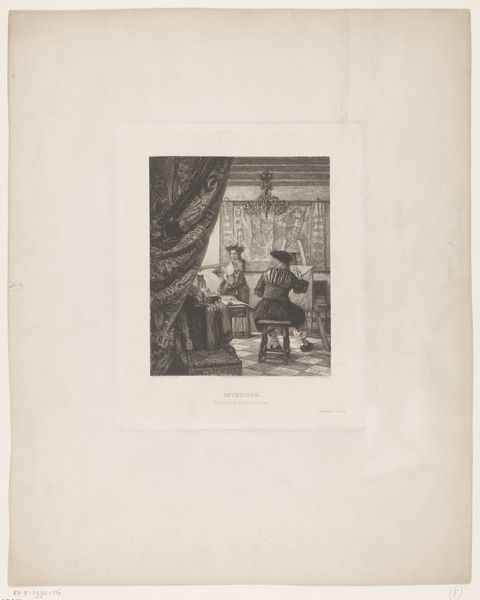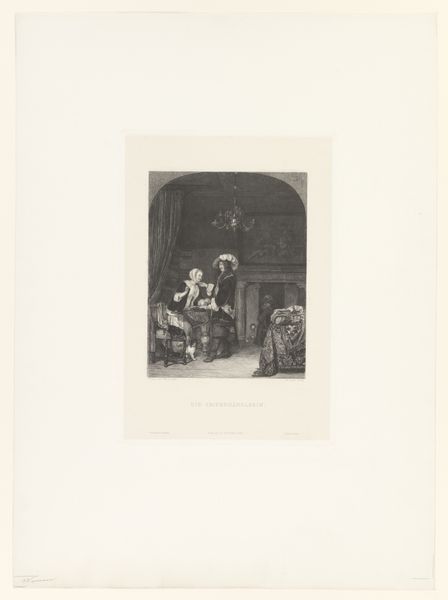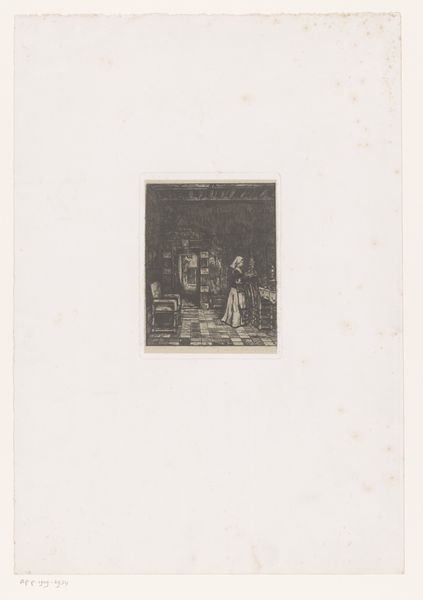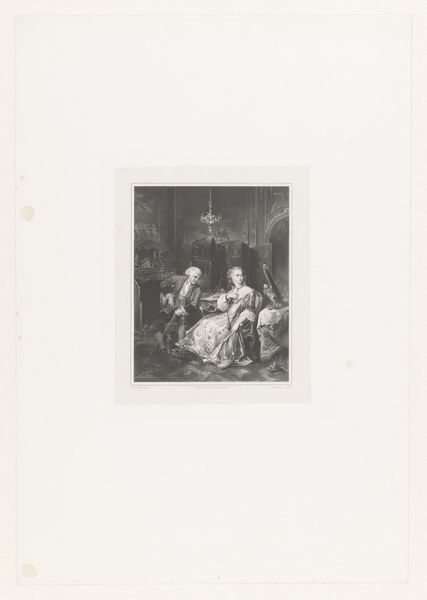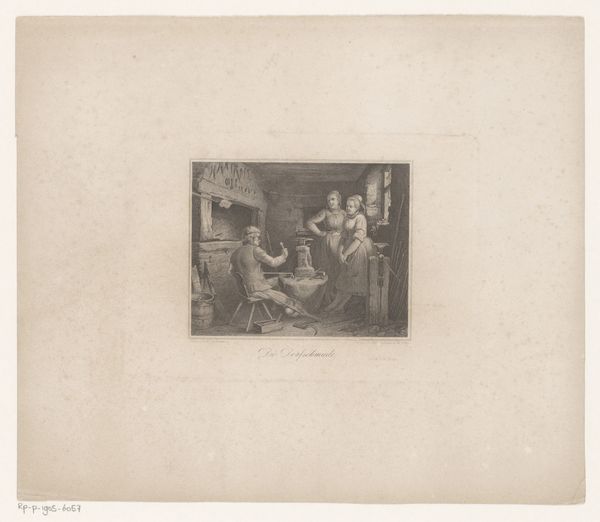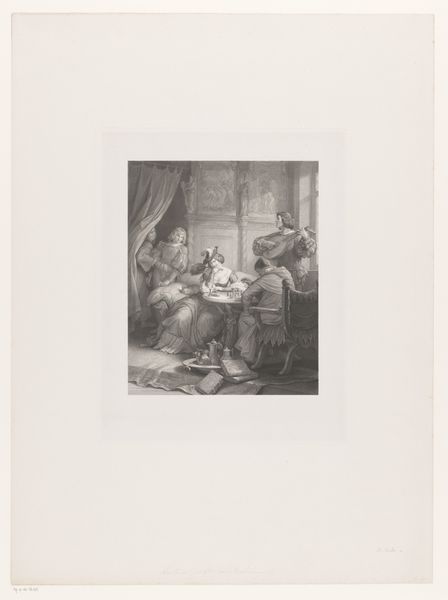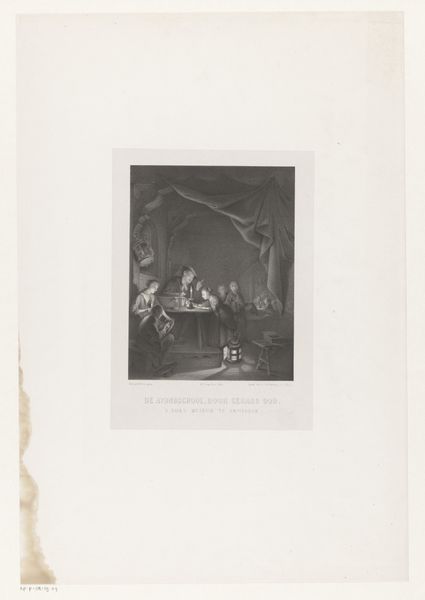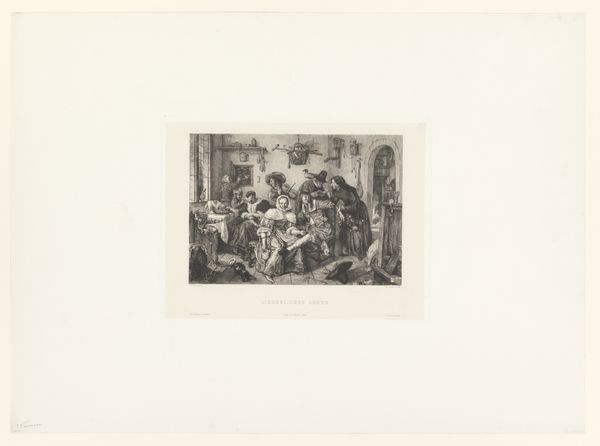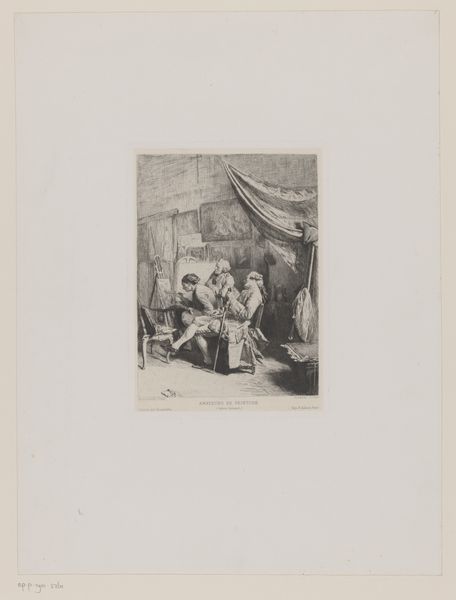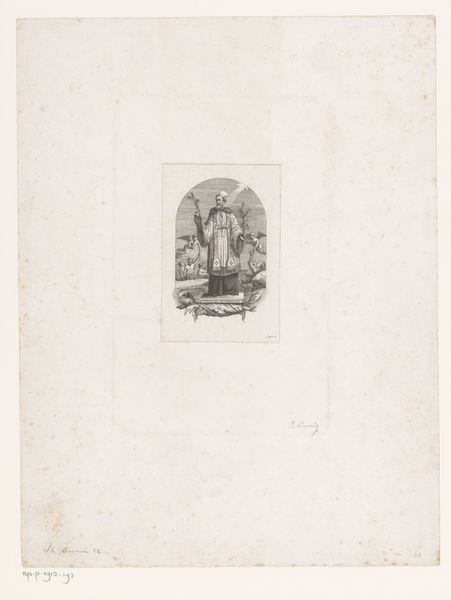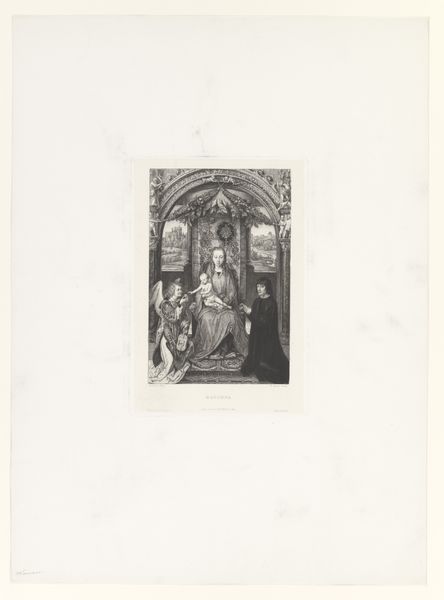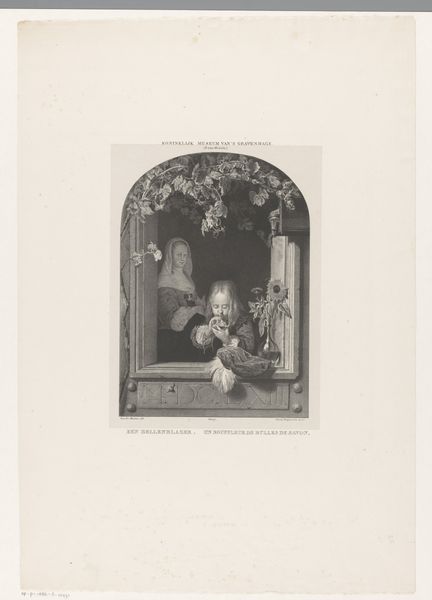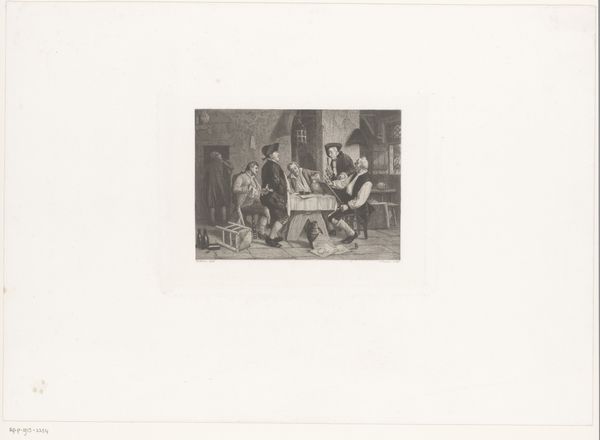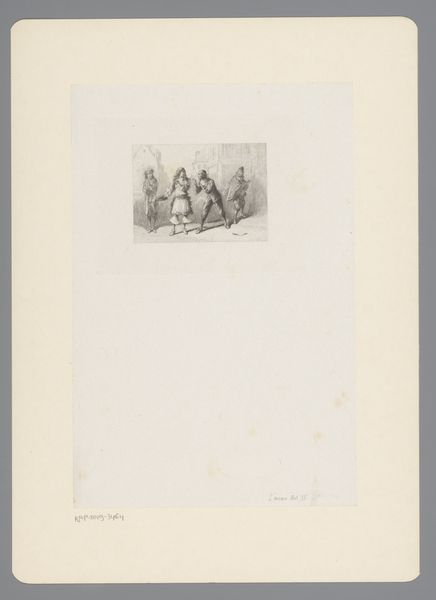
Dimensions: height 284 mm, width 211 mm
Copyright: Rijks Museum: Open Domain
Editor: Here we have William Unger's engraving, "Dokter," dating from sometime between 1861 and 1889. The scene, rendered in delicate lines of ink on paper, feels very staged to me, almost theatrical. How do you interpret the visual symbolism in this work? Curator: This image reverberates with historical and cultural memory. The grouping of figures, almost enshrined within the archway, certainly speaks to a staged atmosphere. The objects, though, tell a powerful story of medicine and status. What jumps out at you from that array of objects on the shelf? Editor: Well, there are a couple of vases, one of which looks almost classical. And what appears to be a shield? I suppose those denote wealth or power? Curator: Exactly. They invoke an established history, prestige perhaps even legitimacy, all tied to the role of the Doctor depicted. Do you notice how that shield-like object also mirrors the archway? A kind of protective enclosure, framing the scene and lending a sense of importance, almost like a sacred tableau? The imagery hints at healing as a kind of enshrined tradition. Does that influence your initial feeling of staging? Editor: It does. The shield is intriguing, adding a sense of tradition to a profession. The entire scene feels ceremonial, less like medical treatment and more like an established cultural ritual. It is a far cry from how one perceives medicine now! Curator: Precisely. The artwork captures that critical cultural transition: Medicine moving towards a kind of performative practice. Our cultural memories around medicine can be shaped or solidified through these careful symbolic inclusions, can’t they? Editor: Yes, now I'm starting to see that. It’s like Unger isn’t just showing a doctor, but also solidifying a particular idea *of* doctors, within a complex web of symbols. Curator: That's right. Symbols work in concert to both reflect and shape the narratives we carry forward. This makes you consider how reliable those traditional narratives are. Editor: Thanks, I hadn't really thought about this at all. Now I am curious how accurate these narratives might have been back then.
Comments
No comments
Be the first to comment and join the conversation on the ultimate creative platform.
